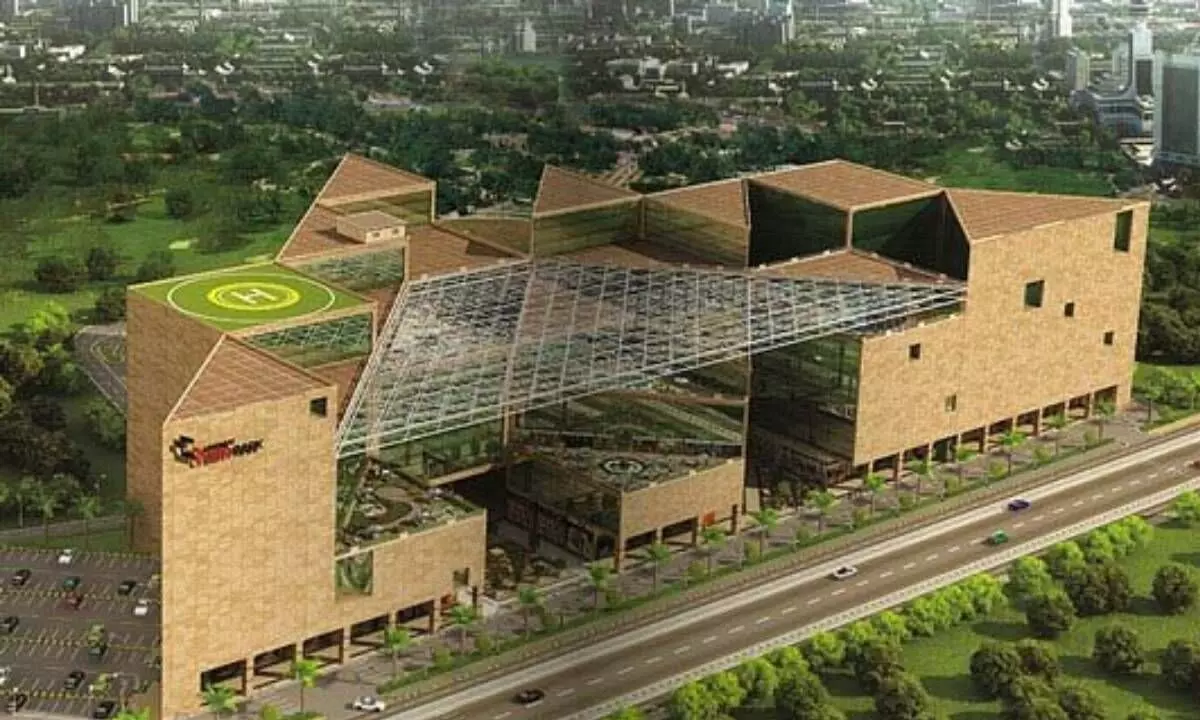Green buildings save 40% energy, water: Experts
The members of IGBC Hyderabad Chapter explain various benefits of the certified green homes
image for illustrative purpose

Hyderabad The members of Indian Green Building Council (IGBC) Hyderabad Chapter appealed all the stakeholders of the construction industry to adopt their green rating system for their ongoing and upcoming projects to achieve energy & water savings up to 40 per cent, reduce operating costs, enhance the health & wellbeing of the occupants, and conserve natural resources for the next generations.
Even existing buildings can go green in order to mitigate their environmental impact, said C Shekar Reddy, Chairman of IGBC Hyderabad Chapter. Though offered at premium price, green buildings offer long-term operational savings, such as reduced energy and water consumption to balance the initial investments over the life cycle of the building.
Revealing various benefits of IGBC-certified green homes, he said that these applied designs, materials and products can have a very short payback period. Green buildings on average provide 30-50 per cent monthly savings at Rs 500-1,000 per home on water and 20-30 per cent reduction in energy bills every month at Rs 300-700 per home when compared to normal buildings.
The green buildings are inherently equipped with better waste & water management and monitoring systems. The reduce-recycle-reuse of waste & water reduces the dependency and load on municipal resources such as electricity, water supply and garbage management. This benefits not only the residents on maintenance but provides superior service from conventional communities.
Green buildings as assets are of superior quality in comparison to normal buildings. They are conceived, designed and built in with greater foresight, with needs of the future taken into account. Use of green and efficient products provides greater longevity. These qualities ensure that green buildings have higher appreciation than the regular assets.
Explaining other advantages, Ar Srinivasa Murthy G, Co-Chairman, IGBC Hyderabad Chapter, said: “Green buildings emphasise the design and installation of effective ventilation systems for improved work environment. These systems provide a constant supply of fresh outdoor air while removing indoor air pollutants. Proper ventilation helps dilute and remove contaminants, ensuring healthier indoor air.”
The green buildings often feature operable windows that allow occupants to have access to natural ventilation. The daylighting is visually superior to artificial lighting, providing a more comfortable and pleasant environment for building occupants. It helps create a balanced and dynamic lighting atmosphere, reducing eye strain and improving visual clarity and acuity, he added.
Also, the green buildings mostly use environment-friendly materials, such as renewable resources, recycled stuff and low-impact alternatives. By using low volatile organic compound (VOC) materials, they minimise the release of harmful pollutants into the indoor air. With focus on promoting healthier indoor environments, they can effectively mitigate the occurrence of sick building syndrome (SBS).
These buildings help lower the ambient temperature in urban areas. The incorporation of green roofs, vegetated walls, and urban green spaces increases the amount of vegetation and shade, which in turn reduces the amount of heat absorbed and re-emitted by buildings and surfaces. As a result, the overall temperature in the surrounding area is reduced, mitigating the heat island effect.
Such buildings provide habitats for various plant and animal species, contributing to urban biodiversity. By creating green spaces within the urban fabric, green buildings help to restore ecological balance and mitigate the heat island effect. By adopting energy-efficient design, renewable energy integration, and sustainable construction practices, green buildings contribute to long-term urban sustainability.

